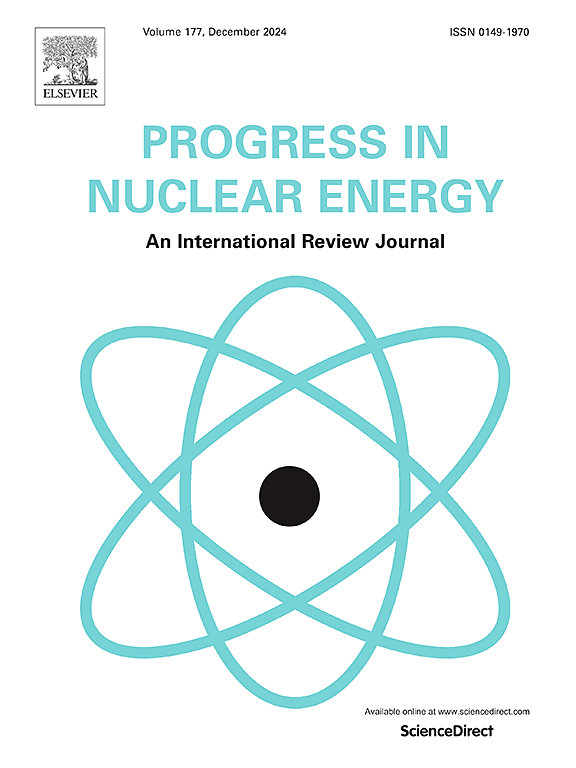表面条件、温度和相对湿度对不锈钢大气氯化物应力腐蚀开裂的影响
IF 3.2
3区 工程技术
Q1 NUCLEAR SCIENCE & TECHNOLOGY
引用次数: 0
摘要
以SS304L为代表的干储罐材料在暴露于海洋环境时,会发生氯化物诱发的应力腐蚀开裂,这是一个至关重要的安全问题。此外,粉尘和盐在罐表面的共沉积可以增强304L不锈钢的缝隙腐蚀敏感性。在本研究中使用白色金刚砂来模拟加工样品表面的粉尘堆积。以奥氏体304L不锈钢为研究对象,在35℃和45℃、45%、55%和70%相对湿度条件下,研究了表面条件、温度、积尘量和相对湿度对裂纹腐蚀的影响。为了评估大气氯化物诱发应力腐蚀开裂(AISCC)的可能性,分析了SS304L的实验结果。本文章由计算机程序翻译,如有差异,请以英文原文为准。
Effects of surface condition, temperature and relative humidity on atmospheric chloride-induced stress corrosion cracking of stainless steel
SS304L representative of dry storage canister material were subjected to chloride-induced stress corrosion cracking, which is a crucial safety concern when exposed to the marine environment. In addition, co-deposition of dust and salt on the canister surface can enhance the crevice corrosion susceptibility of 304L stainless steel. White emery was utilized in this study to simulate the dust accumulation on the surface of the as-machined sample. An investigation into the effect of surface condition, temperature, dust accumulation and relative humidity on crevice corrosion was employed on austenitic 304L stainless steel tested under 35 °C and 45 °C with 45 %, 55 % and 70 % relative humidity (RH). In order to assess the potential for atmospheric chloride-induced stress corrosion cracking (AISCC), the experimental results of SS304L are analyzed.
求助全文
通过发布文献求助,成功后即可免费获取论文全文。
去求助
来源期刊

Progress in Nuclear Energy
工程技术-核科学技术
CiteScore
5.30
自引率
14.80%
发文量
331
审稿时长
3.5 months
期刊介绍:
Progress in Nuclear Energy is an international review journal covering all aspects of nuclear science and engineering. In keeping with the maturity of nuclear power, articles on safety, siting and environmental problems are encouraged, as are those associated with economics and fuel management. However, basic physics and engineering will remain an important aspect of the editorial policy. Articles published are either of a review nature or present new material in more depth. They are aimed at researchers and technically-oriented managers working in the nuclear energy field.
Please note the following:
1) PNE seeks high quality research papers which are medium to long in length. Short research papers should be submitted to the journal Annals in Nuclear Energy.
2) PNE reserves the right to reject papers which are based solely on routine application of computer codes used to produce reactor designs or explain existing reactor phenomena. Such papers, although worthy, are best left as laboratory reports whereas Progress in Nuclear Energy seeks papers of originality, which are archival in nature, in the fields of mathematical and experimental nuclear technology, including fission, fusion (blanket physics, radiation damage), safety, materials aspects, economics, etc.
3) Review papers, which may occasionally be invited, are particularly sought by the journal in these fields.
 求助内容:
求助内容: 应助结果提醒方式:
应助结果提醒方式:


